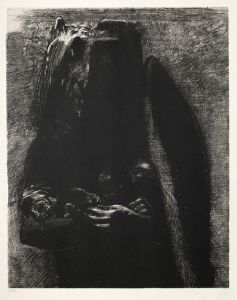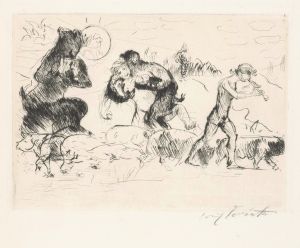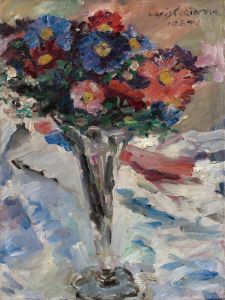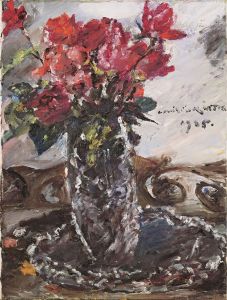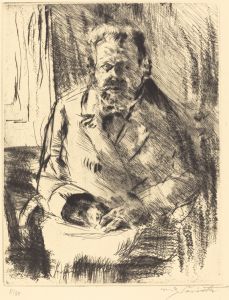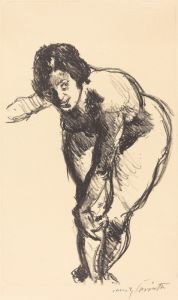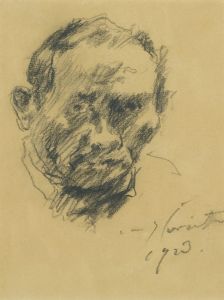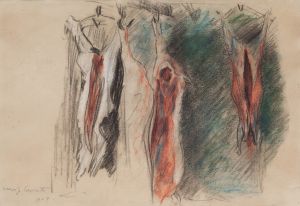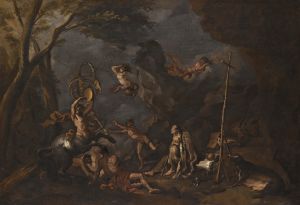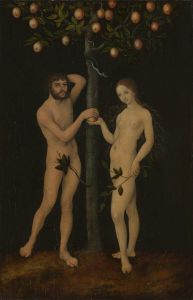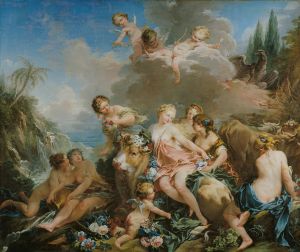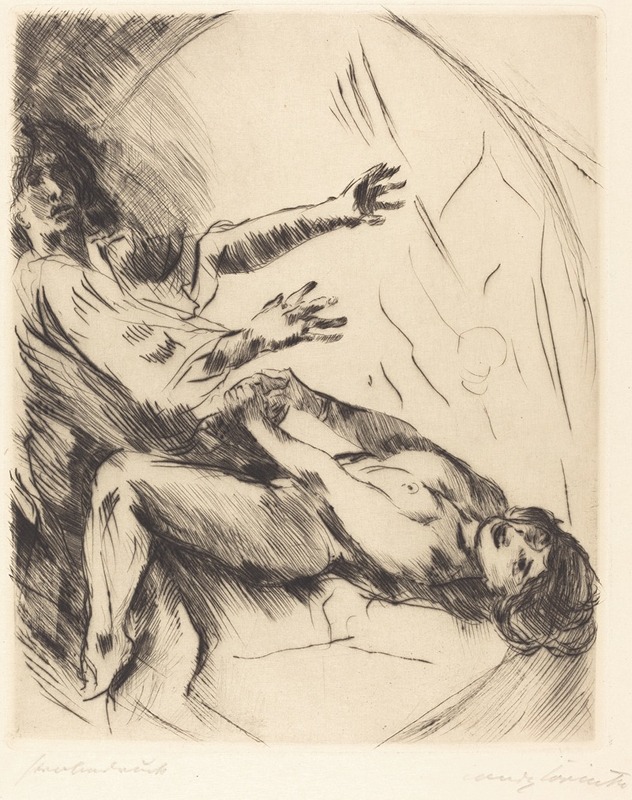
Joseph and Potiphar’s Wife – I
A hand-painted replica of Lovis Corinth’s masterpiece Joseph and Potiphar’s Wife – I, meticulously crafted by professional artists to capture the true essence of the original. Each piece is created with museum-quality canvas and rare mineral pigments, carefully painted by experienced artists with delicate brushstrokes and rich, layered colors to perfectly recreate the texture of the original artwork. Unlike machine-printed reproductions, this hand-painted version brings the painting to life, infused with the artist’s emotions and skill in every stroke. Whether for personal collection or home decoration, it instantly elevates the artistic atmosphere of any space.
Lovis Corinth, a prominent German painter and printmaker, created the artwork "Joseph and Potiphar’s Wife – I" in 1914. Corinth was known for his dynamic brushwork and vibrant use of color, which he applied to a variety of subjects, including portraits, landscapes, and historical scenes. This particular painting is an interpretation of a biblical story from the Book of Genesis, which has been a popular subject in art history.
The narrative of Joseph and Potiphar’s wife is a tale of temptation and virtue. According to the biblical account, Joseph, a handsome and capable young man, was sold into slavery by his jealous brothers and ended up in Egypt, where he served Potiphar, an officer of Pharaoh. Potiphar’s wife, captivated by Joseph’s appearance and demeanor, attempted to seduce him. Joseph, however, refused her advances, citing his loyalty to Potiphar and his moral integrity. Angered by his rejection, Potiphar’s wife falsely accused Joseph of trying to assault her, leading to his imprisonment.
Corinth’s depiction of this story is notable for its emotional intensity and psychological depth. The painting captures the moment of confrontation between Joseph and Potiphar’s wife, emphasizing the dramatic tension of the scene. Corinth’s use of color and light highlights the emotional states of the characters, with Joseph portrayed as a figure of moral strength and Potiphar’s wife as a complex character driven by desire and frustration.
The composition of the painting reflects Corinth’s mature style, characterized by loose brushwork and a focus on the expressive potential of paint. This approach allows Corinth to convey the psychological complexity of the narrative, drawing the viewer into the emotional drama of the scene. The figures are rendered with a sense of movement and vitality, typical of Corinth’s work during this period.
"Joseph and Potiphar’s Wife – I" is part of a broader tradition of artistic interpretations of the story, which has been depicted by numerous artists throughout history, including Rembrandt and Guido Reni. Each artist brings their own perspective to the narrative, reflecting the cultural and artistic contexts of their time. Corinth’s version stands out for its modern sensibility and its exploration of the themes of power, temptation, and integrity.
The painting is housed in the collection of the Museum der bildenden Künste in Leipzig, Germany. It is an important example of Corinth’s work and contributes to our understanding of his artistic development and the broader trends in early 20th-century European art. Through this painting, Corinth engages with a timeless story, offering a fresh interpretation that resonates with contemporary audiences while remaining rooted in the rich tradition of biblical art.





